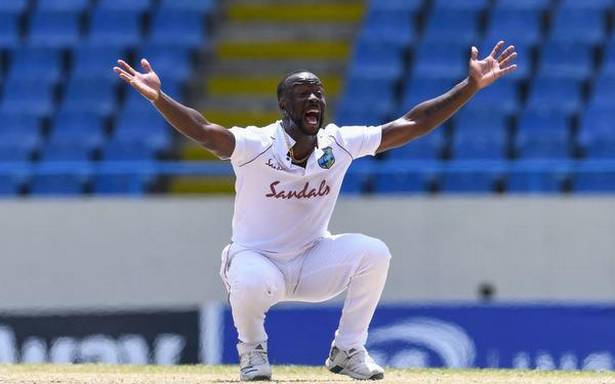What necessitated the review? What does the future hold?
The story so far: The International Cricket Council’s (ICC) cricket committee has made changes to the way lbws will be decided under the Decision Review System (DRS). The “wicket zone”, the area of the stumps a ball must hit for an on-field not-out decision to be overturned, which previously ended below the bails, will now extend all the way up to the top. The committee also decided to retain the umpire’s call, an element that allows the on-field decision to stand when there is no conclusive evidence to overturn it. A player can also ask the umpire whether an attempt was made to play the ball before deciding to review an lbw call. The soft signal protocol for outfield catches, which was in the news during the India-England series, was not adjudicated on.
What necessitated the review?
Under DRS, 50% of the ball should predictively hit the “wicket zone” for an on-field not-out decision to be reversed. Earlier, if the ball-tracking simulation showed the ball to be clipping the bails, the on-field verdict, even if it was not out, stood because the “wicket zone” ended below the bails. This left both players and supporters exasperated because two balls, both predictively shown to be hitting the stumps, can both be out and not out depending on the on-field umpire’s call.

The 50% test is also applied for balls projected to hit the outside of the off-stump or leg-stump. Virat Kohli recently said that “from basic cricket common sense”, there should be no debate on how much of the ball was predictively hitting the stumps, a view previously expressed by Sachin Tendulkar and Shane Warne. The ICC’s recent move to increase the “wicket zone” is partly to address this confusion. There will still be not-out decisions, even after Hawk-Eye estimates that the ball is hitting the stumps. But this will happen less often.
Is the cricketers’ understanding correct?
Kohli’s position assumes that technology is fool-proof. But the ICC retaining the umpire’s call is an acknowledgement that the DRS is not an exact science. The Massachusetts Institute of Technology’s (MIT) review of the DRS technology from 2016, which the ICC has continuously relied on to improve rules, says that the error in predicting the height can be as high as 23 mm and width 8 mm. The requirement that half the ball (the radius of a cricket ball can range from 35.6 mm to
36.4 mm) should predictively hit the “wicket zone” is to cover for this possible error.
The MIT review clearly states that there should be enough time between a ball bouncing and striking the batsman — four uninterrupted frames — to plot a curve within the above-mentioned error estimate. There are other variables too: the size of a ball is not exact and the ball can wear out and lose shape during the course of a match. Also, faster and fuller deliveries will have fewer frames of video available (imagine a yorker, which bounces only at the fag end).
Tennis, another sport that uses Hawk-Eye, does not recognise such grey areas — the ball is either in or out. But the ball actually hits the ground before a decision is made, whereas, in cricket, it is purely a prediction. Even in tennis, the use of Hawk-Eye for calls as close as 1 mm, (in or out) when the figure for maximum error in the technology is around 3.6 mm, has invited criticism.
What does the future hold?
Though the application of the DRS for lbws does not change, it is now slightly more in favour of the bowler. Senior cricket writer Scyld Berry, writing in The Telegraph during the recent India-England Test series, believed this was already the case. “Umpires have seen what a high percentage of deliveries would have hit the stumps but for the batsman’s pads,” he wrote. “So, the umpires have been erring in the bowler’s favour, giving batsmen out on ‘umpire’s call’, no longer giving them the traditional benefit of the doubt.”
Source: Read Full Article

